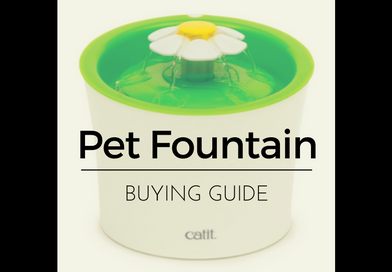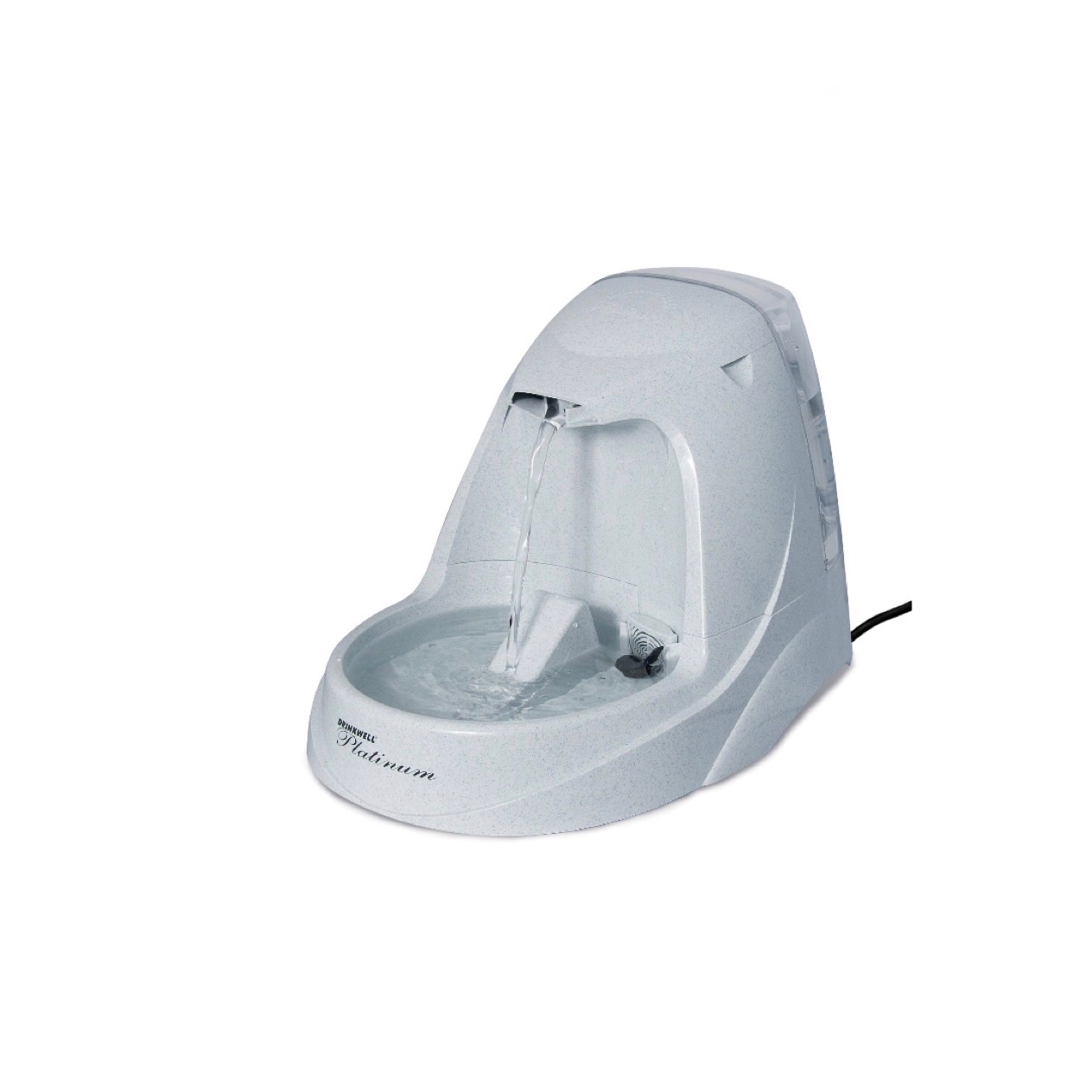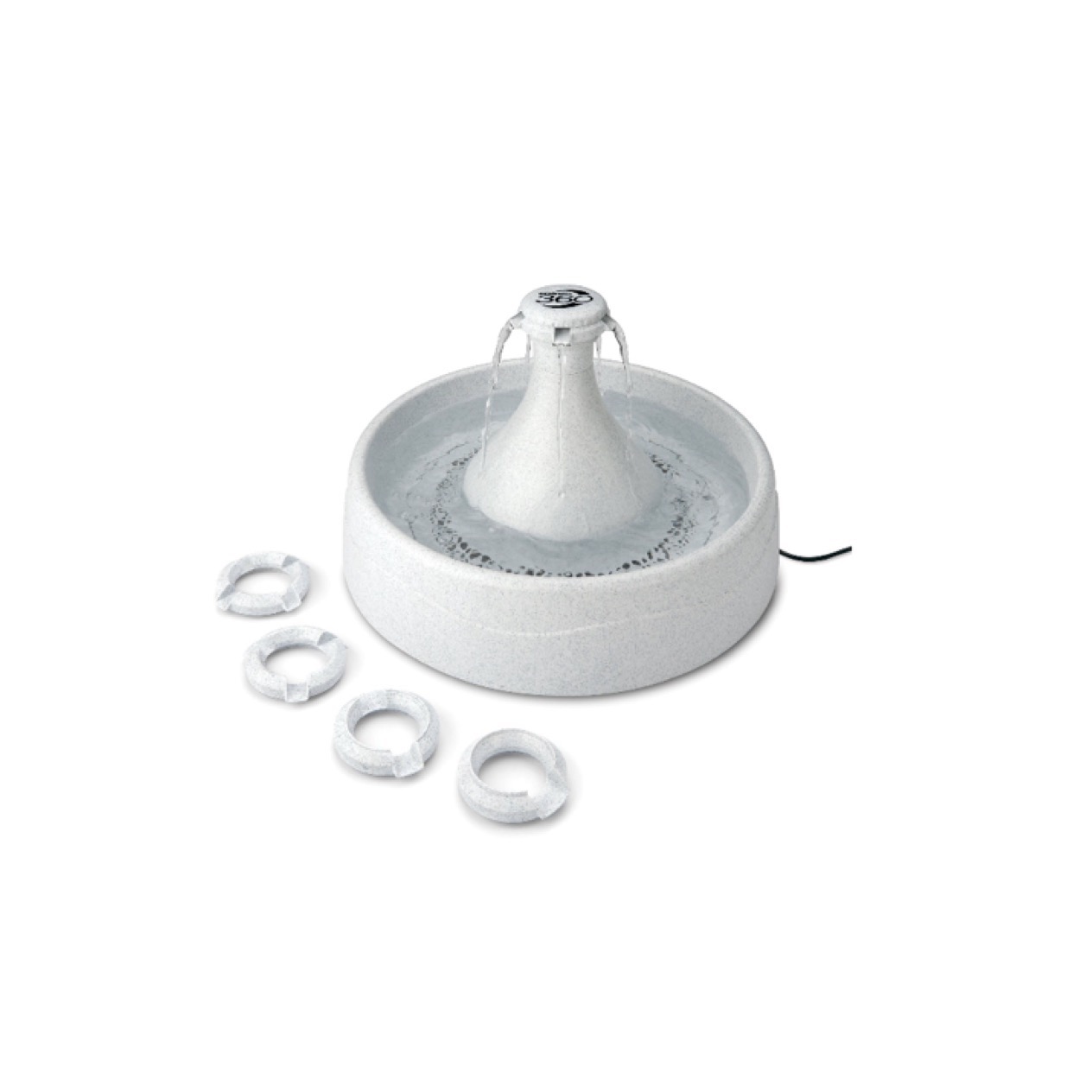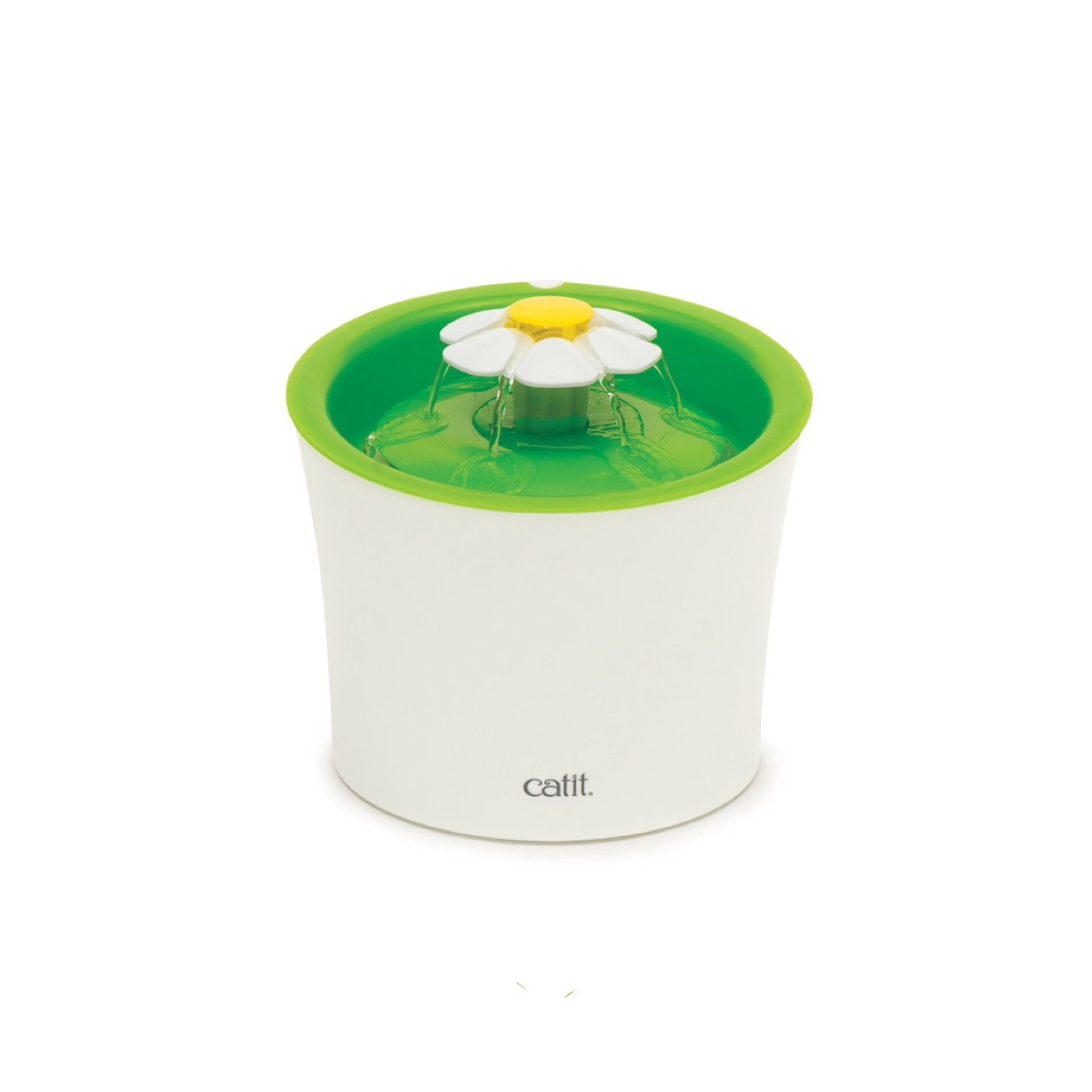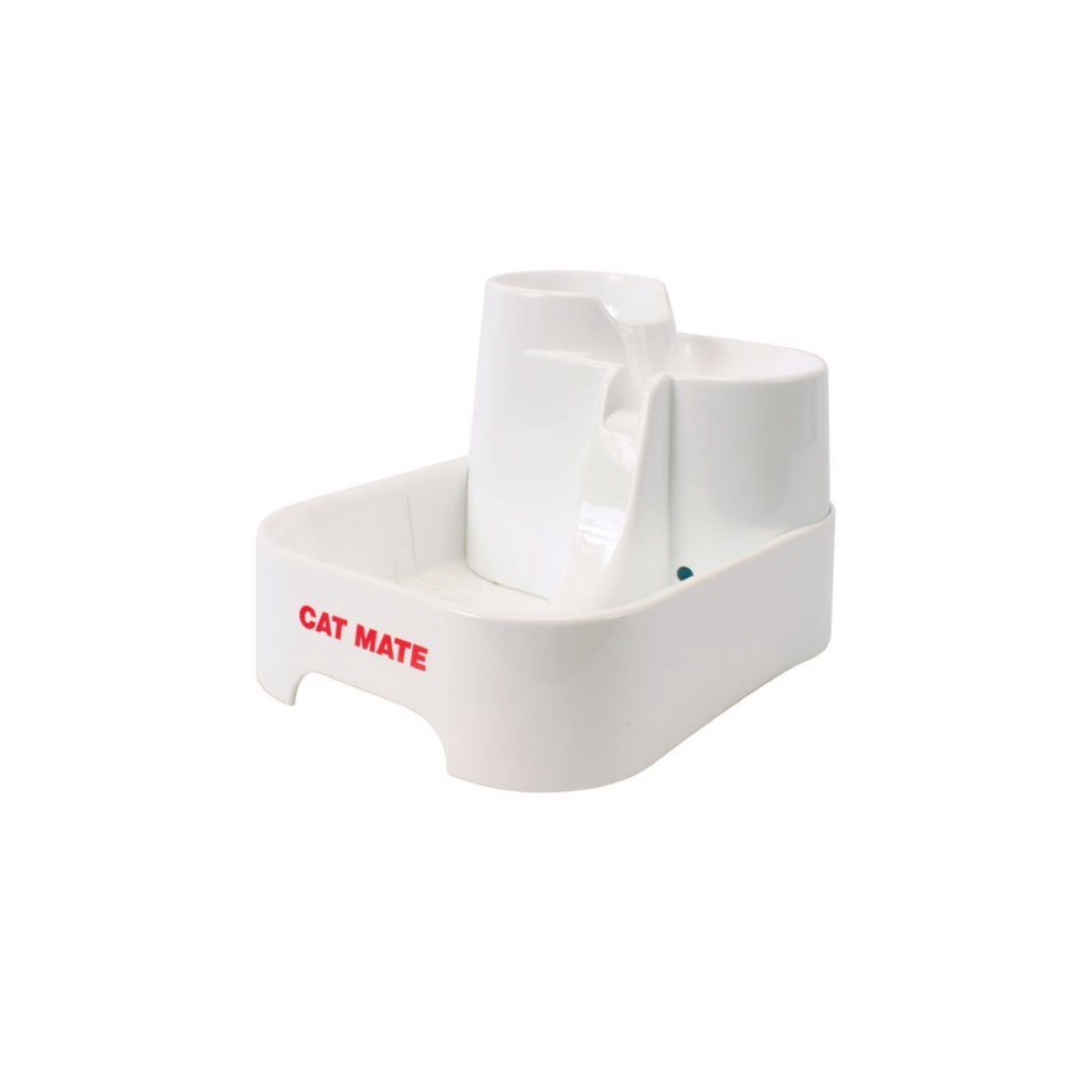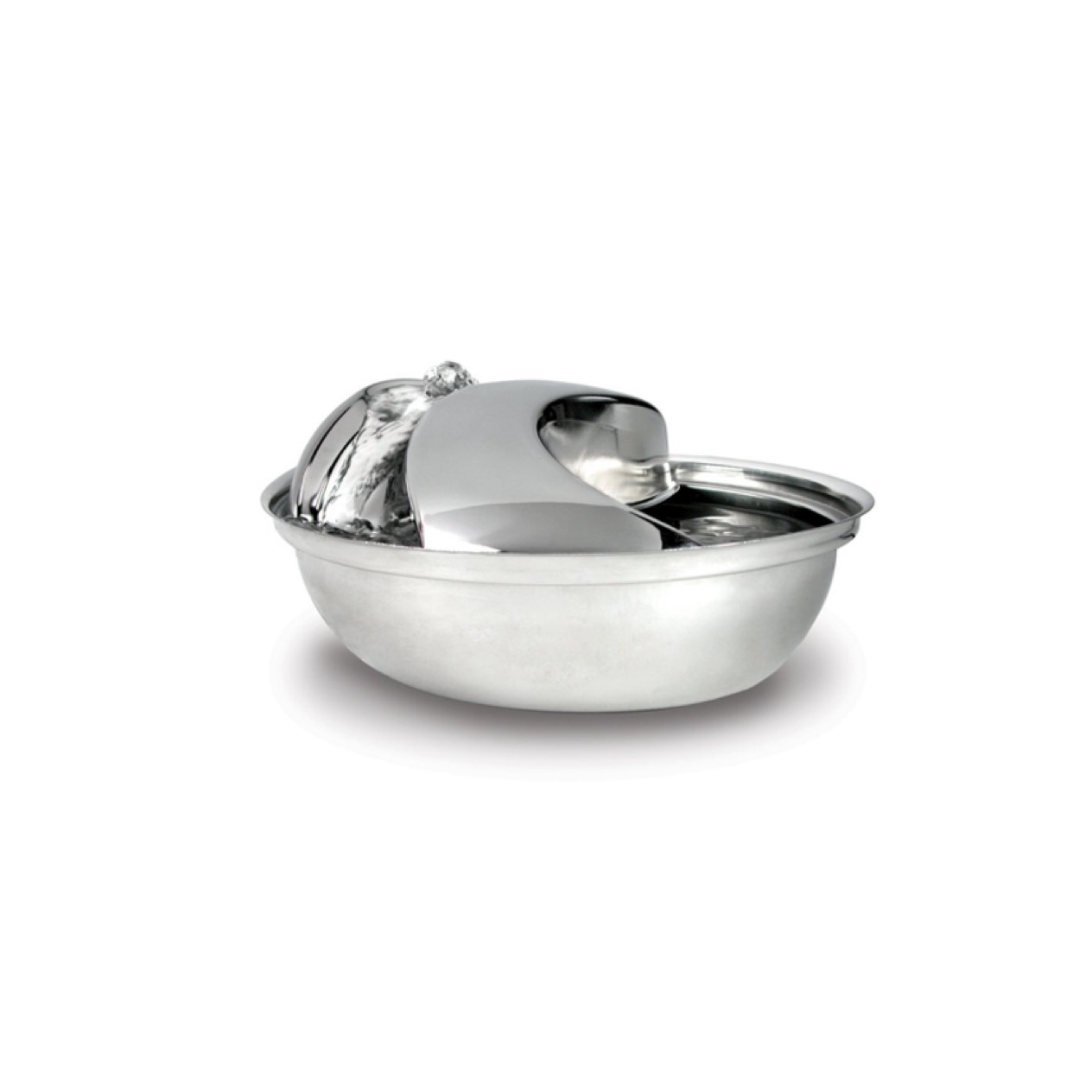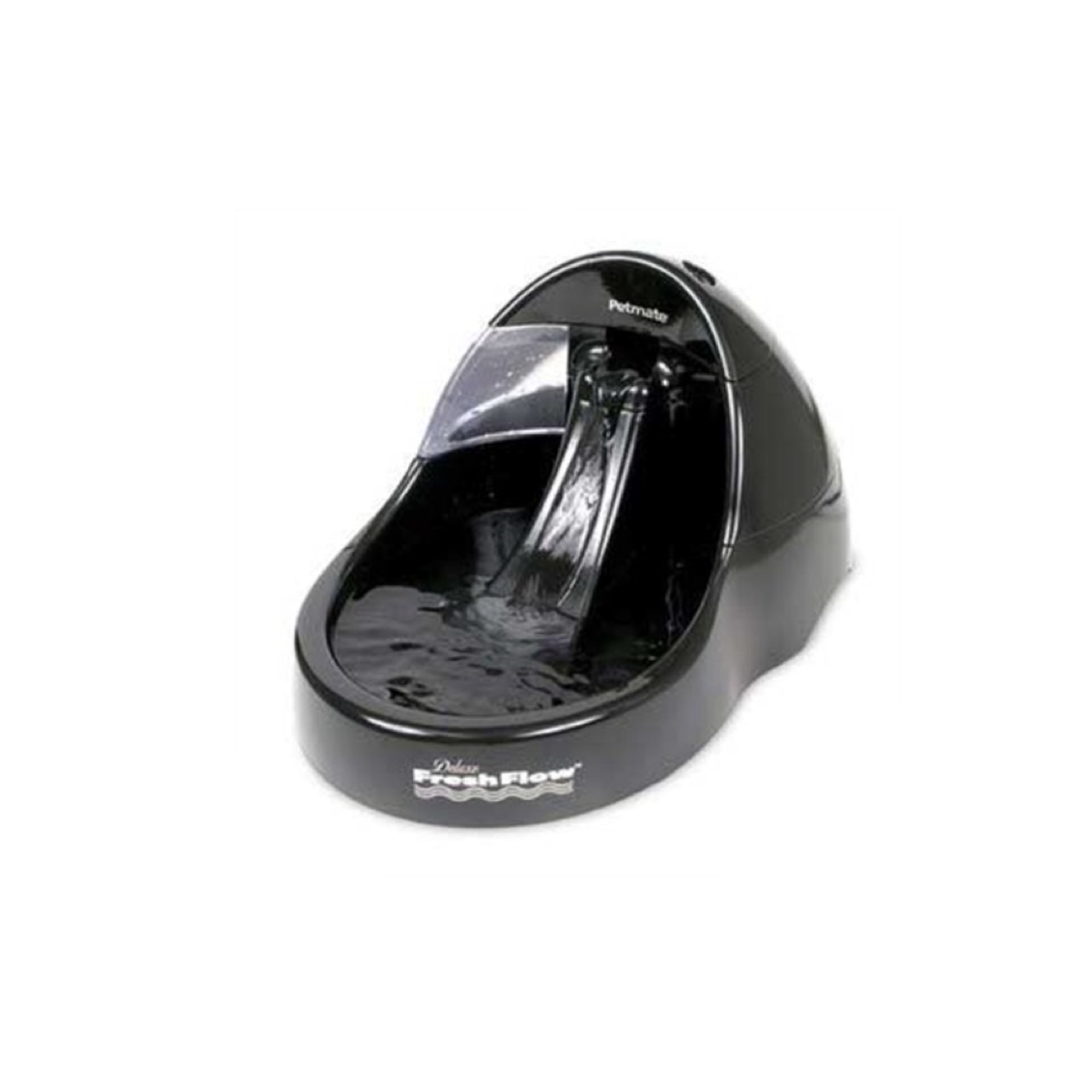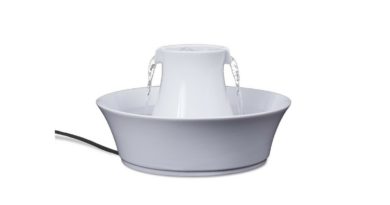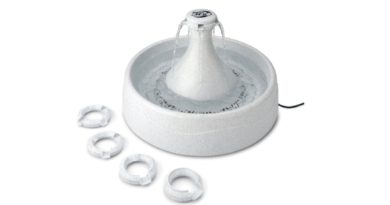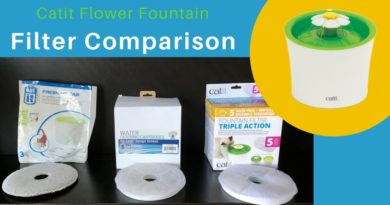Pet Fountain Buying Guide
Fountain Design
Since your target customer is your cat, it’s very helpful to know a little something about their preferences before investing in a pet fountain. Cats are very particular, especially when it comes to drinking water. Use your sink faucet to get an idea if your cat will even drink from a free-falling stream of water. Some cats like the sound of running water but prefer to actually drink from the water that pools in the sink. Is your cat scared of a heavy flowing sink, or is that the only thing that’ll get their attention? A little bit of research will save you the headache of buying the wrong design of pet fountain.
Faucet / Free-Falling Water Fountains
Pet fountains that are designed like a sink faucet are pretty common. For most cats, it’s an easy transition from sink-drinking to pet fountain-drinking. Most fountains have adjustable flow settings so you can find the one that’s most appealing to your cat. And if your cat doesn’t care, then the flow settings are also useful for minimizing noise. Our top-rated fountain in this category is the PetSafe Drinkwell Platinum Pet Fountain.
Water Slide Fountains
If your cat prefers to drink from your hand while the faucet is running, or from the side of the sink, you may want to consider a slide-type fountain. A lot of free-falling fountains have a slide or sloped tray near the base. Fountains with this design usually work the best on lower flow settings so there isn’t any splashing. These types of fountains are also great at minimizing noise from flowing or splashing water. Our top-rated fountain in this category is the Pioneer Pet Raindrop Pet Fountain.
Combination Fountains
Some manufacturers are getting pretty creative when it comes to designing pet fountains. We are beginning to see more fountains that incorporate multiple features, like bubblers, water pools, slides, and free-falling streams all in one. So if you’re still not sure what your cat’s preference is, these fountains are a safe choice. They also happen to be at the top of our list for overall fountain quality. Our two favorite combination-type fountains are the Catit Flower Fountain and the Cat Mate Pet Fountain.
Fountain Material
The most common pet fountains on the market are made of plastic. Stainless Steel and Ceramic pet fountains are the other two materials commonly used. Some cats actually have preferences when it comes to the fountain material. The material of the fountain will play a big part in the aesthetics of the fountain. But probably the most important reason for picking one material over another is the ease of cleaning and the degree of sanitation.
Plastic Fountains
If you are shopping for a pet fountain, you’re probably already aware that plastic fountains dominate the market. Plastic is lightweight, durable, and inexpensive. Plastic in itself is not an unsanitary material. The problem arises when plastic fountains accumulate scratches over time. The scratched surfaces are breeding grounds for bacteria. The leading cause of Feline Acne is from cats coming in contact with bacteria while drinking water from a contaminated bowl. Another downside to plastic is that it is more cumbersome to clean. Most plastic fountain components aren’t dishwasher safe, so you’ll have to wash them by hand. As long as you’re diligent about replacing your pet fountain when it gets scratched up, plastic fountains are hygienic. Even though plastic fountains will need to be replaced more frequently than stainless steel or ceramic fountains, they are still the most economical choice.
Stainless Steel Fountains
Stainless Steel is an excellent material for pet fountains. It’s relatively lightweight, durable, attractive and easy to clean. Stainless Steel is dishwasher safe and can withstand very hot temperatures. Stainless steel is pretty resistant to scratching, so you won’t have to worry about bacteria as much as with plastic fountains. Some cats are finicky when it comes to eating or drinking out of stainless steel bowls. This is possibly due to them getting spooked from seeing their reflection. This isn’t too common, but it would certainly defeat the purpose of getting a pet fountain if your cat is too scared to use it! Another drawback of stainless steel fountains is the price. They are typically quite a bit more expensive than plastic fountains. But in our opinion, the benefits you get from a stainless steel fountain are well worth the price.
Ceramic Fountains
Some of the nicest looking fountains on the market are made of ceramic materials. Ceramic is a non-porous material that is dishwasher safe, which makes it easy to clean. Ceramic fountains are quite heavy, which can be a good thing and a bad thing. The weight will ensure it doesn’t get knocked around too much by your pets. But it can also make cleaning the fountain more of a chore. Ceramic doesn’t scratch very easily, but it can become chipped. Once the surface of the ceramic fountain is chipped, it is just as prone to bacteria as scratched plastic. Ceramic fountains are just as pricey as stainless steel fountains. Depending on your aesthetic preferences, getting a ceramic pet fountain that blends in with your modern home décor might be worth the extra money.
Filter Design
Just about all pet fountains have at least one filter. Filters are used to improve taste, purify the water, and remove solids or debris. Filters come in all shapes and sizes. You will need to buy replacement filters that are specifically designed for your pet fountain. Filter placement is another factor to consider. Ideally, you want your solids filter or screen to be placed upstream of the pump. This will reduce the frequency with which you’ll have to deep-clean the pump. The activated carbon-filter or filter used to purify the water should be downstream of the pump, right before the water exits the fountain.
Activated-Carbon / Charcoal Filters
Carbon filters are economical and effective at removing chlorine, sediment, volatile organic compounds, and bad tastes and odors from drinking water. In order for them to work, the untreated water needs to come in contact with the surface of the carbon filter and pass through it at a relatively low flow rate. Depending on the quality and hardness of your water, this type of filter will need to be replaced every 2-6 weeks.
Water Softening Filters
Water softening filters utilize an ion-exchange process to remove excess calcium and magnesium from your drinking water. Cats that drink hard water are at a higher risk of developing urinary tract problems.
Foam Filters
Foam filters are used to catch hair, debris, and other particles. These filters improve the quality of the water and also extend the life of your pump. If the foam filter is properly placed before the pump intake, it will prevent clogging of the pump and reduce the frequency of cleaning.
Do I need a filter if I use filtered or bottled water?
The short answer is no, a filter isn’t absolutely needed for your pet fountain to be operational. But before you start celebrating, make sure you look at the bigger picture. As we discussed above, filters aren’t just used for improving the taste of water. They also remove hair, debris, and any other particles that get introduced to your cat’s drinking fountain. So if you opt out of replacing the filter on a regular basis, you’ll probably have to switch out the water in the fountain daily to ensure it stays fresh. With the filter, you shouldn’t have to change out the water more than once a week. So the question really comes down to how much is your time worth.
Noise
Whether your new pet fountain will be placed in a far distant corner of the house or right next to your bed, it better be quiet. Everyone has different levels of tolerance when it comes to bothersome noises. Some people actually like the sound of trickling water because they find it soothing. Others will find it annoying because they end up making frequent trips to the restroom. But aside from the trickling water sound, the noise that just about no one tolerates is that from a humming pump motor.
Pump Motor Noise
Your average pet fountain pump has a 12-volt motor and can pump about 60 gallons per hour. Some pumps are quieter than others, but the pump itself isn’t always the thing to blame for the noise. In fact a lot of pet fountains use identical pumps, but you’ll quickly learn from the reviews that one fountain will be much nosier than another. The pump motor will vibrate when it’s in use. A partially clogged pump will have to work harder to spin and will therefore vibrate more than a clean, well-lubricated pump. So the first step in keeping your fountain quiet is regularly cleaning the pump. A well-designed fountain will include some sort of vibration-dampening feature. Rubber suction feet on the base of the pump are pretty common. Some fountains include a pump enclosure or cubby for the pump to sit in. The quietest cat fountain on the market (Cat Mate Pet Fountain) utilizes an isolated pump system that basically consists of a small plastic footer in addition to rubber suction feet. In general, plastic is better at dampening noise than stainless steel or ceramic. The level of submergence will also affect noise. When the water level in your fountain starts to get low, you’ll notice the fountain will be much noisier. A lot of fountains are designed with only an inch or two of water covering the pump. Compare that to the Catit Flower Fountain with over 5 inches of water over the pump and it’s easy to see why this fountain ranks as one of the quietest fountains on the market. The More Water Cover Over the Pump = Quieter Fountain 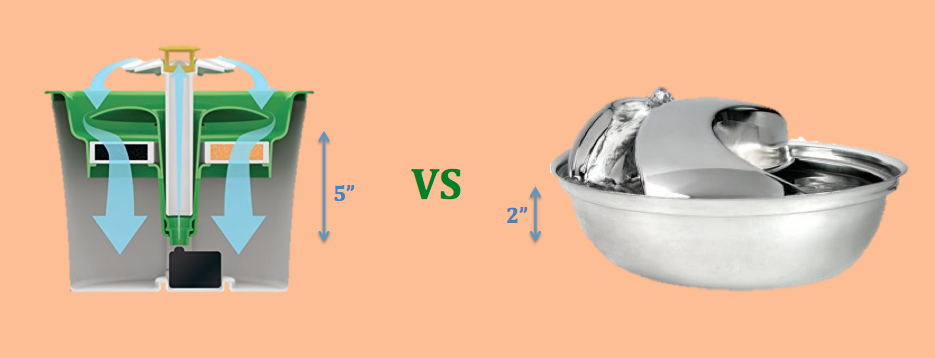
Trickling Water Noise
The design of your fountain will determine the degree of water noise. Fountains with free-falling streams that land straight into a pool of water will be the loudest. The splashing sound you hear from this type of fountain isn’t typically a soothing sound. Fountains that use a water slide are much quieter. Depending on the flow settings, these fountains can sound like a babbling brook or can be virtually silent with regard to water noise.
Maintenance
If you’ve never had pet fountain before, read this section carefully. Most people really don’t understand the time commitment they’re signing up for when they buy their first pet fountain. Even the simplest fountain design can be a nuisance to clean.
Motor Cleaning
If you read the fine print on just about all pet fountains, they’ll recommend that you thoroughly clean your pump motor weekly. This can be a much bigger task than it sounds. The fully disassembled pump looks like this: 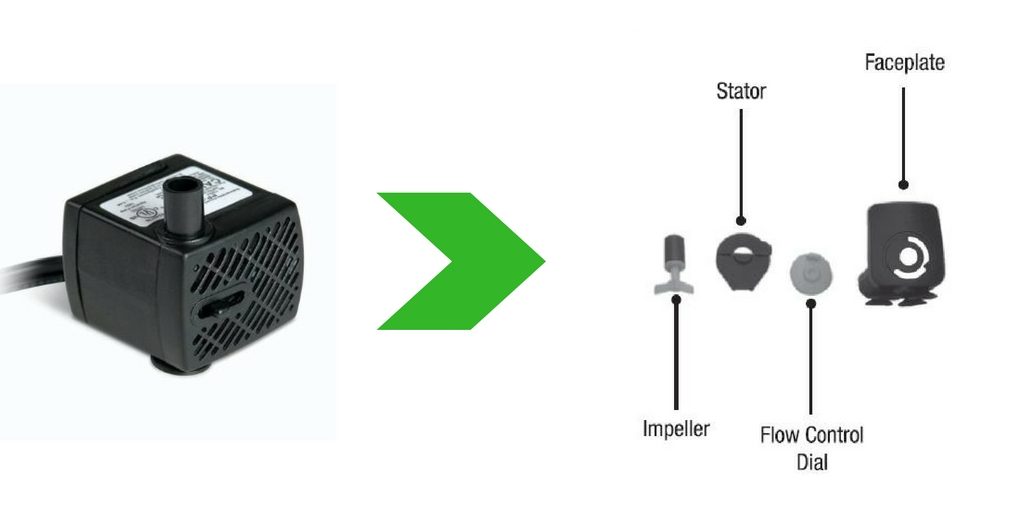 Once you’ve taken everything apart, you’ll need a very small brush to clean inside the crevices. If you don’t thoroughly clean the pump at least monthly, it is very likely that it will get clogged and stop working all together. And what good is that fancy pagoda pet fountain if it’s not able to pump water?
Once you’ve taken everything apart, you’ll need a very small brush to clean inside the crevices. If you don’t thoroughly clean the pump at least monthly, it is very likely that it will get clogged and stop working all together. And what good is that fancy pagoda pet fountain if it’s not able to pump water?
Fountain Cleaning
So pump motor cleaning is pretty standard across all models of pet fountains. And we’ve already established that it can be a very time-intensive process. But you still have to clean the actual fountain. You can save yourself A LOT of headaches if you purchase a fountain that is easy to clean. It is quite unfortunate that one of the best pet fountains on the market is also the most difficult fountain to clean. (PetSafe Drinkwell Platinum Pet Fountain). Simple fountain design equals less work to maintain. Find a fountain that has only a few main components. Avoid fountains that have lots of pieces with small, hard to reach crevices. Stainless Steel and Ceramic Fountains are dishwasher safe, which makes cleaning them very easy. Some plastic fountains, like the Cat Mate Pet Fountain and Drinkwell Fountains are dishwasher safe. Since the Drinkwell Platinum Pet Fountain has so many nooks and crevices, even throwing it in the dishwasher isn’t enough to get it clean.
Filter Replacements
On average, pet fountain filters will need to be replaced monthly. Most of them are easy enough to change out. Due to the design of some fountains, filters may need to be replaced more frequently. The PetSafe Drinkwell 360 Pet Fountain recommends filter changes every 2 weeks. And that particular fountain has both a carbon filter and a foam filter. Take a look at the table below that outlines the fountain filter requirements.
Fountain Refilling
The capacity of your drinking fountain will determine the frequency with which you’ll have to refill it. Regardless of your fountain size, it’s still a good idea to change out the water at least weekly. Most fountains can be refilled by simply pouring water in the main basin. This is a lot easier than trying to pick up the fountain and fill it at a sink. If the fountain has a gravity reservoir, like the PetSafe Drinkwell Platinum Pet Fountain or the Petmate Deluxe Fresh Flow, you’ll have to fill the reservoir rather than pouring water directly into the basin. Here’s a table that shows the fountain capacity and filling method:

